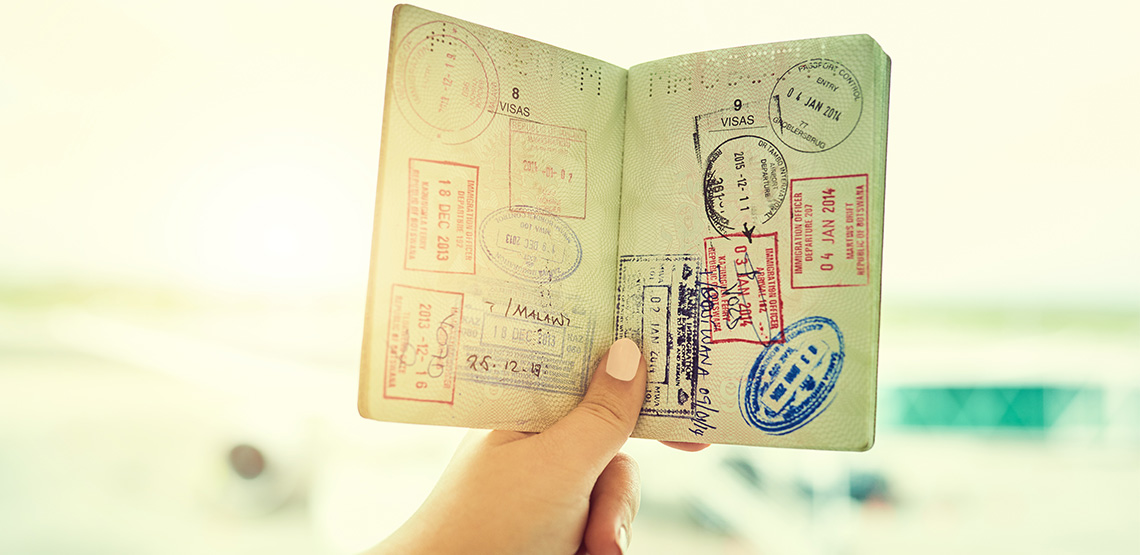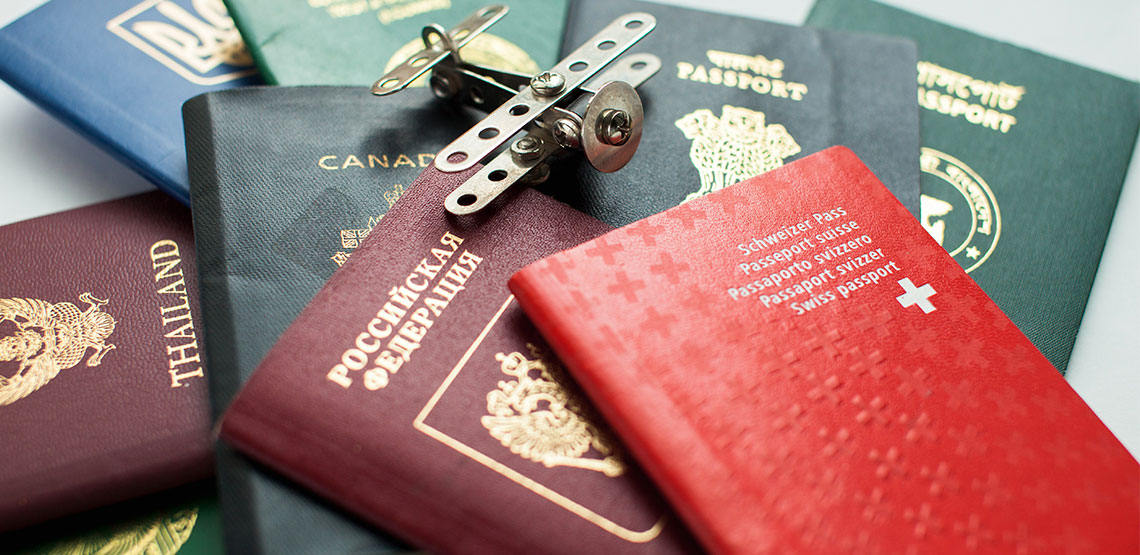The Complete Guide to Passports
The First Step to Worldwide Adventure
A passport is a travel document that’s issued by a country’s government to its citizens. It verifies the nationality and identity of the holder to permit international travel. This spmall booklet is your ticket to traveling the world. Of course, if you haven’t traveled to another country before, then you may not know a lot about them.
Passports contain the person’s legal name, date and place of birth, passport number, photo, date of issue and expiry, and signature. They serve two purposes: to allow you to enter a different country and to allow you to regain entry to your country of citizenship. These days, American citizens who plan to travel outside the United States must have a passport to do so. Keep in mind that places like the US Virgin Islands, Guam, the Mariana Islands and Puerto Rico are US territories, which means American citizens don’t need a passport to travel to there; all you need is an approved photo ID like a driver’s license, just as if you were traveling domestically.
This guide will not only teach you how to get a passport, but will answer other common questions related to passports you might have. While we will focus on American regulations and processes, note that the processes for obtaining, renewing, and — if lost or stolen — replacing passports are similar in countries around the world.
Who Is Eligible for a Passport?
In order to be eligible to obtain a passport, you’ll have to prove that you are a US citizen or a non-citizen national. If you are under 16 years of age, you will need the consent of both your parents, or legal guardians, to obtain one. You must apply in person with your parents, but if only one can accompany you, evidence of sole custody or notarized written consent of the other parent is usually acceptable.
Those who are 16 years of age and older do not need parental consent. However, there are some circumstances that can make one ineligible, such as:
Unpaid Child Support
If you have unpaid child support of $2,500 or more, you’ll have to make arrangements with the state where it is owed to make the payments in order to be eligible for a passport. Once you have paid in full, the state will contact the US Department of Health and Human Resources and have them remove your name from their list of those with outstanding arrears, which they provide to the US Department of State.
If you have questions about the process or how much you owe, contact your nearest child support enforcement agency.
Felony Drug Convictions
If you’ve been convicted of a felony related to drugs or certain drug-related misdemeanors, you will be ineligible for a passport while you’re incarcerated and during any court-mandated probation.
Other Issues
If the US State Department determines that you may be a threat to US policy or national security, you can be denied a passport. There are other potential issues that can prevent you from getting one, such as owing a large amount of money to the IRS, being ruled legally incompetent, being forbidden by probation, parole or court order, or being subjected to felony arrest.
Where to Get a Passport
If this will be your first passport, if your last one was stolen or damaged, or if it’s been 15 or more years since your last one was issued, you’ll need to go to a local passport acceptance facility to apply. These facilities include county courts, post offices and libraries.
What Do You Need to Get a Passport?
To apply for a passport, you’ll need to submit the required application form, which can be printed out from the government website online here, or you can pick one up at the facility where you plan to submit your application.
There are multiple documents you’ll need to submit with that application, including the following:
Certified Birth Certificate
All US citizens who were born in the United States will need to provide a certified birth certificate. If you don’t have one, contact the vital records office in the state where you were born to find out how to obtain a certified copy. Some may offer expedited shipping when placing your order if you need it quickly.
If you were born to American parents while they were living or traveling abroad, they should have registered your birth with the country’s US consulate or embassy, where they would have obtained a Consular Report of Birth Abroad. You can obtain a copy of that report from the US Department of State.
If you were born on a military base abroad, your birth may not have been registered with a US embassy, which means you may need to contact the hospital where you were born. The public affairs offices for the appropriate military branch may also be able to assist.
If you can’t obtain a certified birth certificate, you must submit a combination of records such as a published birth announcement, notarized affidavit, hospital birth record, and/or baptismal or circumcision certificate. The more documents you have that prove your citizenship, the better.
Official Photo ID
You’ll also need to submit the appropriate photo identification. It must be a permanent form of ID and not a temporary card, and be issued officially by the US government. An example would be your driver’s license. If you’re submitting identification from outside the state in which you’re applying, you must also present a secondary form of ID that matches all the information on the first form of ID.
Passport Photo
While some passport acceptance facilities provide photo-taking services, it’s usually easier to do it ahead of time. Where can you get passport photos? Many different places offer this service such as photocopy/printing stores, large pharmacies and department stores. While you’ll only need one, you’ll typically get at least two.
The photo you submit with your application must be a high-quality color photo, be 2 inches by 2 inches in size, and have been taken within the last six months. You cannot be wearing glasses, a hat, headphones, a wireless or hands-free device, or any other head gear, unless worn for religious reasons and documented as such.
There are other requirements as well that can make it difficult to capture a photo that won’t be rejected on your own, which is why it’s best to have your photo taken at a facility that provides passport photo services. Most charge less than $15. In fact, bad photos are the primary reason passport applications are denied, meaning that it’s only going to make the entire process much longer if you decide to do it yourself in a photo booth, by taking a selfie, or by asking a friend.
The Fees
How much does it cost to get a passport? Current fees for first-time applicants who are 16 years of age and older are $110 for the application and $35 for the execution. If you are looking to renew your passport, you only need to pay the application fee.
Current fees for applicants who are younger than 16 years of age are $80 for the application and $35 for the execution.
All fee details can be found on the State Department website here.
How Long Does It Take to Get a Passport?
Typically, routine service for delivery of your passport is four to six weeks; however, it’s important to check the official government site for current estimates. It can take longer during government shutdowns and in other circumstances, which is why it’s always best to apply as far ahead of a planned international trip as possible.
If you need one sooner, expedited service is available for an additional fee, with delivery typically in two to three weeks, although it’s not guaranteed.
If you have a life-or-death emergency — which only includes a death, serious illness, or injury of an immediate family member — that requires you to travel outside of the US within 72 hours, you can visit your closest US passport agency to obtain one. You’ll have to provide all of the required documents; proof of the life-or-death emergency, like a death certificate, statement from a mortuary, or a signed letter from a hospital or medical professional; and proof of your international travel.
Name Changes
Legal name changes, typically due to marriage or divorce, are handled differently depending on how long ago your current passport was issued. If it was issued over a year ago, you will have to submit the form for a US passport renewal, DS-82, which can be done anytime your passport is valid. The fees are the same as they are for a first-time passport, but you won’t have to pay the execution fee.
If you plan to travel in the near future and your flight was purchased using the new name, you’ll need to do this before you go. You’ll have to document the name change with a legal original or certified copy of a government-issued document of the change of name, such as a marriage certificate.
The good news for those who were issued a passport less than a year ago, is that general corrections can be done using form DS-5504, which does not require a fee. Both forms require that you send in your current passport and necessary legal documentation of the name change.
Passport Renewal and Other Issues with Passport Expiration
Passport renewal is generally easier than obtaining a first-time passport. You will need your old, undamaged passport that was issued within the last 15 years, a new passport photo and the DS-82 renewal form. You cannot renew it online, but you can submit by mail or in person at a passport acceptance agency. The fees, as mentioned, are the same as they are for your first passport, minus the acceptance fee.
When renewing by mail, you can download and print the official form, fill it out and attach an official photo with staples (requirements for this part are the same as they are for a first-time passport), and enclose your current passport (which will be returned) and a check for the appropriate fee. Be sure to mail it using a trackable delivery method. You’ll get your new passport via US Priority Mail with delivery confirmation, or you can pay an additional fee for Priority Express return service.
If your passport has been significantly damaged, you’ll have to apply for a new one in person using form DS-11, and provide all the required documentation and the damaged passport. That includes water damage, missing or torn pages, unofficial markings on the data page, and more.
Another important thing to remember is that if you plan to travel in the near future, many countries require your passport be valid for six more months or they may deny you entry. Ideally, you should apply for a new passport eight months before it expires to give yourself some buffer time in case the wait time is longer than usual.
Bartering is the norm in many countries across Europe, Asia and Africa. These tips on how to haggle will ensure you do so with respect and finesse!
Lost or Stolen Passports
If you lose your passport or it gets stolen while you’re traveling in a foreign country, be sure to report it to the nearest US consulate or embassy. If it was stolen, file a report with the local police department too. Passports can be used for illegal activity; although it’s rare, some end up in the hands of crime gangs. The consulate or embassy will help you through the process so you can get back home, providing you with a limited validity emergency passport if necessary.
To help speed up the replacement process, bring two passport photos to the consulate or embassy. You’ll also need an official ID such as a driver’s license, and, ideally, a photocopy of the missing passport or birth certificate to prove your citizenship, along with your travel itinerary such as a return airline ticket. If you’ve filed a police report, bring that too.
If you can’t present all these documents, don’t have a melt down – the staff will help as quickly as they can. Usually emergency passports can be provided within 24 hours which will enable you to get home; once you get home you can trade in the emergency passport for one that is fully valid.
Be Aware That Your US Passport Won’t Take You Everywhere
A US passport alone doesn’t allow you entry into every country in the world. There are limitations. Some countries require Americans go through a visa application process, which vary in difficulty. For example, it will take a lot of time and effort to get a Russian visa.
Cuba is another story altogether. Although former President Barack Obama eased restrictions on traveling to Cuba, President Donald Trump reversed the policy. While Americans can still visit, they can’t visit as tourists unless they are part of an organized, licensed tour group. There are many other restrictions in place that makes it challenging to visit Cuba, such as a new directive that prohibits any transactions with companies that are controlled by the Cuban military, which runs most hotels.
Traveling to Turkmenistan in Central Asia on the Caspian Sea requires a letter of invitation certified by the government and a visa. Even the letter, along with proof you’ve hired a 24-hour guide and have a full itinerary, doesn’t guarantee you’ll be able to go; in fact, it’s fairly common to be rejected.
The bottom line is that the first thing you should do when planning a trip is check the entry and visa requirements of the particular country or countries you plan to visit. Nearly all have an official website that provides this information.
Other Passport Questions
There are lots of other questions you might have in regard to passports. Here are the answers to a few of the more common.
What Happens If You Change Your Name on Other Pieces of ID Like Your Driver’s License, but Not Your Passport?
In this case, provided the name on your passport matches your airline ticket, you shouldn’t encounter any problems as the only document you will need to present when going through customs and immigration is your valid passport.
What If I Run out of Pages for Stamps?
The bad news for frequent travelers is that if you run out of pages for stamps and need additional space in your passport, you’ll have to renew it following the same process as outlined above, using form DS-82 and paying the renewal fees.
What Happens If I Have Dual Citizenship?
Having dual citizenship means you are a citizen of two countries — something that the US allows, but doesn’t necessarily encourage. People who have dual citizenship often have a passport for each country; in fact, this is a fairly common practice.
Having two passports can be a big advantage for international travelers as different passports have different levels of power. A second one can provide easier entry to some countries, and even allow you to avoid fees, visa requirements and so on. German passports, for example, give the holder entry to all 177 countries without the need of a visa.
When to use which passport is a question that really depends on what countries you have dual citizenship in and what countries you are traveling to and from. Most sources agree on the following points:
- Book your flights with the passport you will show at the destination you are going to. Airlines want to know that you won’t be denied entry when you arrive at your destination.
- At check-in at the airport, use the passport you booked your flight with.
- When dealing with immigration employees, however, show them the passport that proves you have a right to be where you are right now.
Be sure to check the particulars of the countries you have dual citizenship in and the countries to and from which you are traveling.









